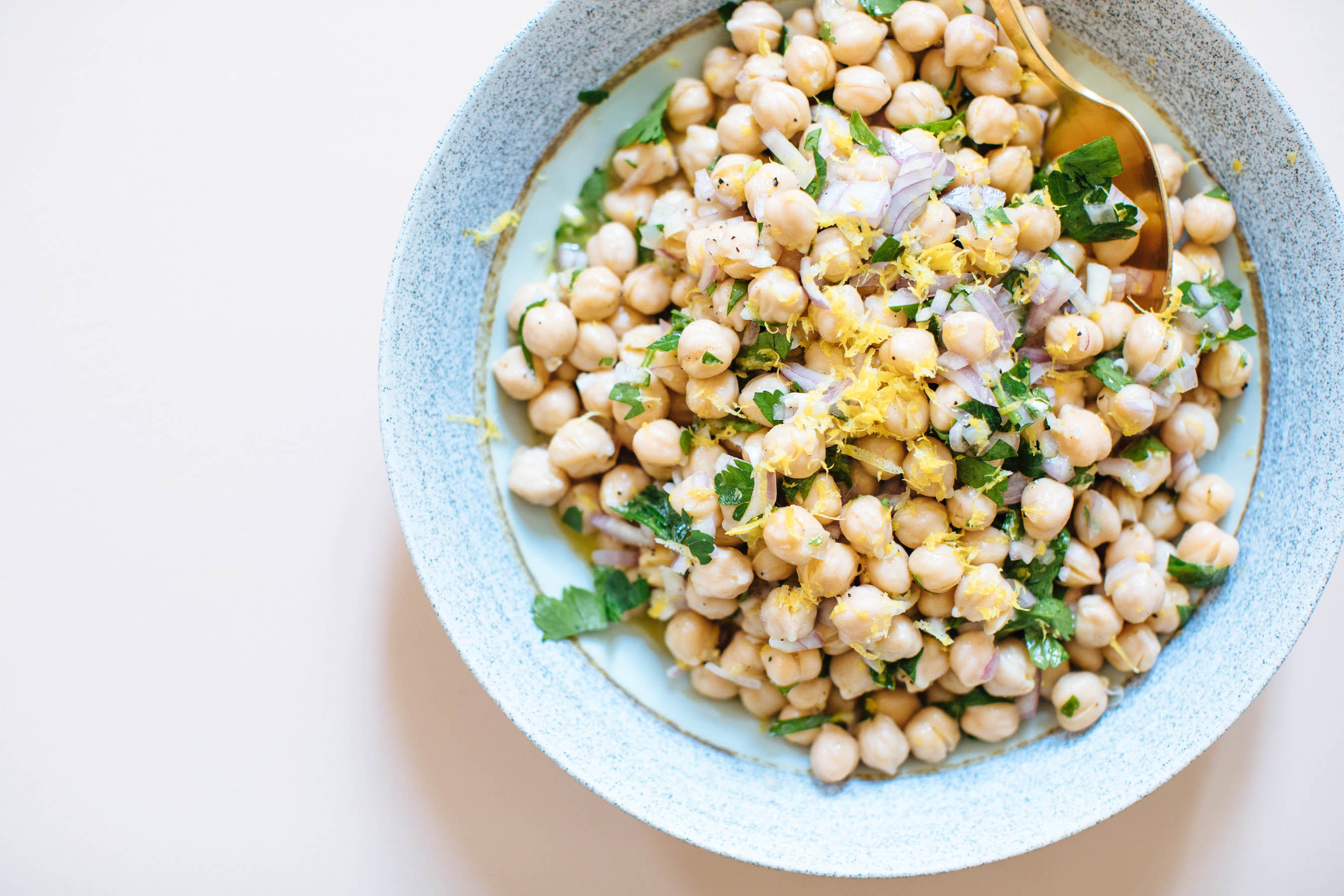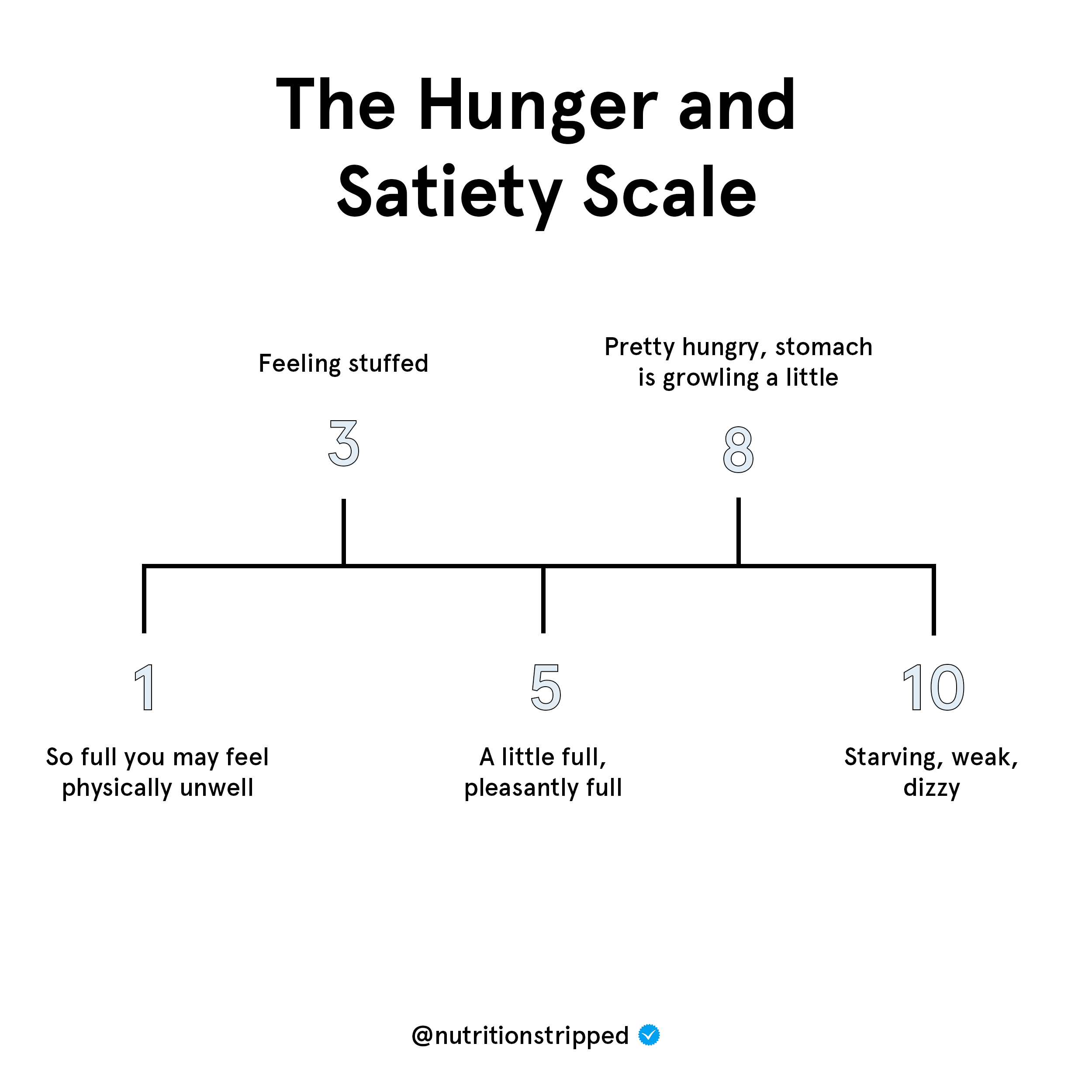Have trouble determining what hunger and fullness feel like? Keep reading to learn how to use the Mindful Eating Hunger Scale to determine your hunger cues.
It sounds so simple, right? Eat when you’re hungry and stop eating when you’re full. But in reality, this oftentimes can be a lot easier said than done. There are so many day-to-day factors that can complicate these cues. From stress levels to work schedules and emotions, it’s so easy to confuse hunger cues with other cues.
Getting to know your own hunger and satiety cues can help clear up this confusion. It gives you the power to identify and address other cues accordingly.

Mindful Eating Hunger Cues
When eating mindfully, hunger cues are utilized to designate not only when to eat, but also how much. Our cues essentially let us know what we’re in need of as well as when.
Food is the body’s primary energy source. It’s what allows us to think clearly, build muscle, pump blood, breathe air, and do so much more. While we’re all performing these human functions on a daily basis, we’re doing so in a slightly different way, we’re all a bit unique.
This is why hunger cues are so important. If the body is undergoing stress, fighting an infection or disease, performing physical labor, or engaging in more or less movement than normal, your body’s energy needs will differ. Your hunger cues reflect these needs.
Now that we know what they are, how do we gauge and measure them? This is where the Mindful Eating Hunger Scale comes in.
How To Use the Mindful Eating Hunger Scale
This scale helps clarify some of the ambiguity that comes along with measuring hunger cues because it gives you numerical values to refer to. The hunger cues operate on a scale from 1 (so full you may feel unwell) to 10 (starving, weak, dizzy). The middle of the scale, 5, is where you feel content. You’re slightly full so you’re comfortable, you’re not in need of anything.

Check-in With Your Hunger Cues
The first step to using the scale is to get to know your own body. How does it communicate hunger? What about slight hunger? What does it feel like? And on the flip side, what does fullness feel like?
In order to understand these cues, we have to really introduce mindfulness. To get started with this, throughout the day (before meals, during meals, and after meals), take note of where you are on the scale. Choose a numerical value that you feel accurately describes the degree to which you’re feeling hunger or satiety.
The key here is to do this without judgment and with compassion. Will this be super easy the first time you try it? Probably not! But most things we learn to do are not. Remember that you’re quite literally teaching your body a new skill, and a subjective one at that.
The more you check-in, and the more you pause and reflect, the easier it will be for you to notice your cues without even having to intentionally check in.
Abide By Your Hunger Cues
After you go through the process of defining your cues, it’s time to start abiding by them. When you hear your body asking for food through hunger, do your best to grab something to eat. If you’re very hungry, make a full meal. If you’re slightly hungry, a snack will do just fine.
Simply getting into the habit of abiding by your cues will take time as well. You may possibly have to shift some of your preexisting routines, eat a bit more or less than you previously were, but that’s quite alright. This is exactly what mindful eating entails.

When is it Okay to Eat When I’m Not Hungry?
But what happens when you end up wanting to eat something when you’re not feeling physical hunger? Does that mean you’re doing something wrong?
Nope, not in the slightest. You may be surprised to hear this, but there are plenty of reasons to eat even when you aren’t. This may be enjoying dessert after dinner or eating to give your body nourishment even if something like stress is suppressing your hunger.
With mindful eating, it’s all about being mindful and having heightened awareness of why you’re eating. That way, you can choose the best option for you at any given moment. You may say to yourself, “I’m not that hungry, but I would actually enjoy that dessert right now.”
On the other hand, you may say, “I notice that I’m not actually hungry, but I really want a snack.” In this case, we want to pull that mindfulness in to determine why. Is it because you’re mindfully, and intentionally excited to eat said item? Or on the other hand, are you experiencing another emotion that you may previously have used food to cope with?
When our eating choices aren’t mindful or intentional, where they’re used to cope or conceal, we want to try to find alternative, more productive coping mechanisms that directly address the emotion at hand.
Whatever it may look like for you, this awareness can help you make intentional, mindful choices.
The Takeaway
The mindful eating hunger scale is a great tool that you can use to build your mindful eating skills. If you’re struggling to decipher where satiety starts and hunger stops, give the exercises we discussed a try. And remember! Take it slowly.
Do You Want to Experience More Balance with your Food Choices?
Then find your balanced eating type!
Take this 45-second free quiz to find out which balanced eating archetype you are, and what your unique type needs to maintain balance with the way you nourish yourself. That way, you can finally be free from food and diet obsession, maintain a balanced weight, and cultivate a positive relationship with food and your body.
Take The Free Quiz Now
The post How to Use the Mindful Eating Hunger Scale appeared first on Nutrition Stripped®.
McKel (Hill) Kooienga
Comments
Post a Comment